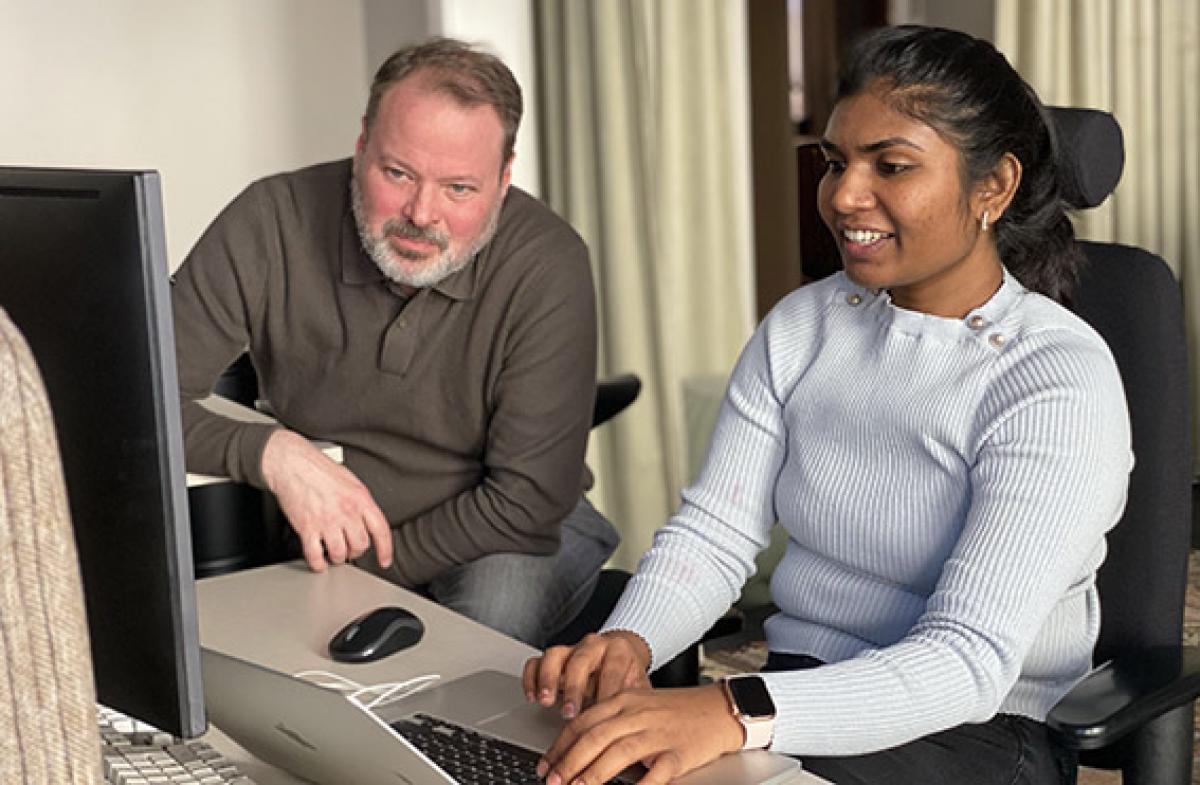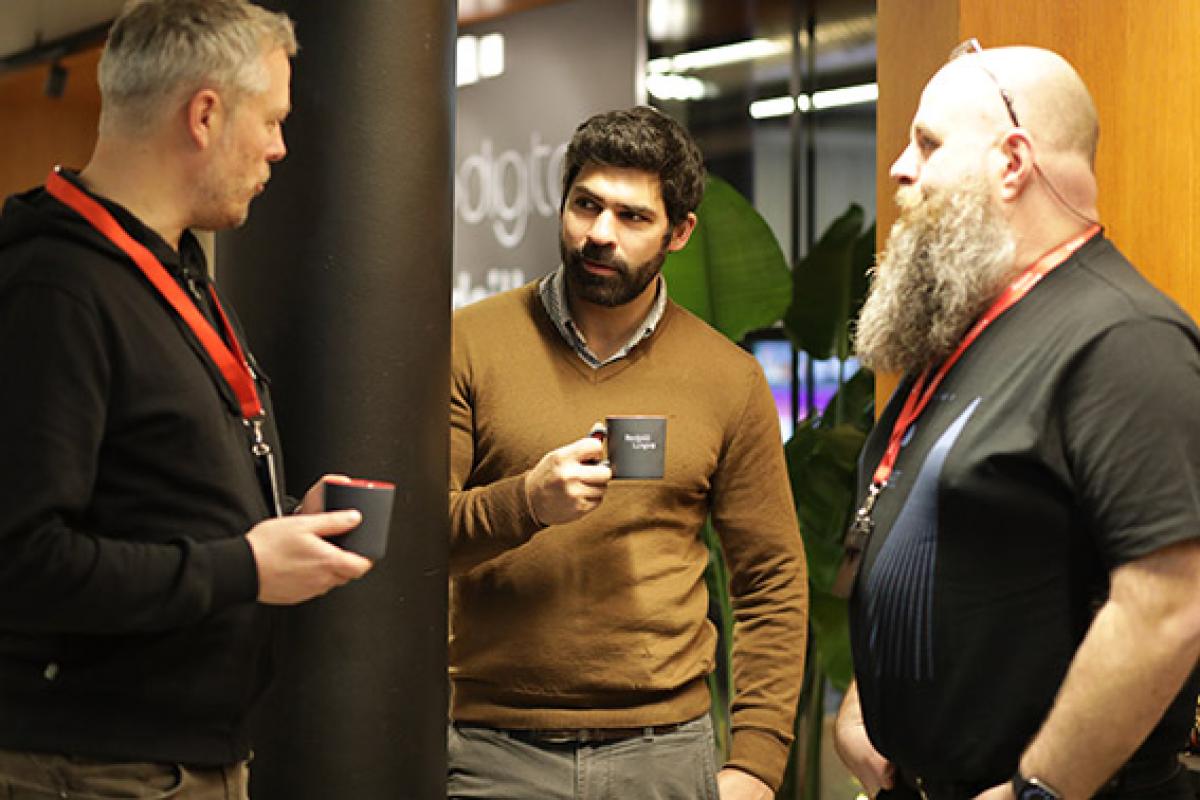In the previous articles in this series, we discussed how to gather the needs and requirements of the business and then articulate them into measurable goals.

We also discussed how to staff the development team and which competencies/experiences to focus on and how they are linked to the goals. Finally, we delved into the agile principles and Scrum and how you can start using them in practice. Some of the most fundamental aspects you need to establish in the team are effective communication and good collaboration. When these elements don't work, it becomes very challenging to make anything else work. Communication is the topic I will discuss in this article.
Clear, well-defined communication channels
To facilitate communication between team members, it is good to define in advance which tools will be used and in what contexts. In today's open IT landscape, there are numerous communication tools available, and it can sometimes feel overwhelming and difficult to know which ones to choose. The simplest answer to the question of which tools are the best is: "Test them!" Select a few chat tools such as Slack, Skype, Jitsi, Mattermost, Hangouts, and others, and conduct a small evaluation where all users list the pros and cons. There are many helpful websites online that have already conducted such evaluations, so you don't have to reinvent the wheel every time. But take the top five ranked tools and do your own evaluation with the team.
Also, consider complementing with tools for real-time communication through video and audio, collaboration tools where you can work on images, texts, and documents in real-time together, and even tools for more formal communication where it is easy to store and track information. Tools commonly used include Jira and Confluence. For more formal communication, something as simple as email can suffice.
Openness, feedback, conflict management
As I discussed in a previous article, it is incredibly important to create a work environment where everyone has trust in each other and feels that there is a high level of openness, allowing them to give and receive feedback in a constructive and effective manner. I will not elaborate much more on this in this article, but I still want to emphasize the importance of creating such an environment. Otherwise, all other work can become futile, and you will have to start over again in building your optimal team. There is hardly anything worse than dysfunctional teams where people are hesitant to speak up to avoid risking saying the "wrong things" or where they are afraid to ask for help because it exposes their own lack of knowledge.
Similarly, conflict management is crucial to prevent minor disputes from escalating into insurmountable obstacles and contributing to the construction of barriers, ultimately leading to a breakdown in communication. Address small disagreements, disputes, or differences of opinion directly before they become significant issues. Don't get me wrong—I do not mean that everyone should gather every morning, sing Kumbaya, and agree on everything in a big group hug. We will always have more or less preferences for different people and their behavior, but we can learn to be more tolerant of these behaviors and be aware of them. At the same time, the manager or team leader can help shed light on individual idiosyncrasies and provide guidance on how to interact with others.

Get to know each other
Another aspect that may not initially come to mind is the importance of getting to know each other within the team. Often, all efforts focus on how we interact with each other at work, but too little time is devoted to getting to know each other on a deeper level. There are numerous activities you can organize to strengthen the camaraderie within the team and help people get to know each other better. In addition to the obvious choice of a social gathering after work at a restaurant, you can arrange team activities such as picnics, playing games like rounders, sack race, adventure courses in the forest, playing billiards, curling, shuffleboard, amusement park activities, and more.
When planning an activity, it is important to try to include as many team members as possible. If, for example, it involves physically demanding activities, you may need to assess the terrain within the team and determine who can participate. Sometimes, it is possible to organize two parallel activities. One being more relaxed and the other more energetic. For example, while some team members compete in go-kart racing, the non-participating team members can assist with award ceremonies and other activities surrounding the racing. Often, there is a comfortable area where non-participants can sit and socialize while the others are engaged in the activity. The only limit is your imagination, and a good way to generate a list of ideas is to sit down with the team and brainstorm or create a bulletin board where everyone can write down suggestions. The first time I did this, I ended up with a list of nearly 250! different ideas.
Also, it is important to recognize that it is almost impossible to involve every single individual in the team, and that's okay. Do not force people to participate in activities they are not interested in. Instead, come up with an activity that appeals to those who did not join last time. If there are individuals who do not want to participate in energetic activities or the activity you previously organized, try a completely different time of the week that may suit them better and plan an activity that they would appreciate more. Visiting a SPA facility, pottery workshops, museum visits, or taking a guided boat tour in the archipelago are all examples of calmer activities that may appeal to more people in the team.
Moreover, there are plenty of fun exercises you can do within the team that do not require much energy and preparation. One suggestion is to have each team member write down two things on post-it notes, one on each note. Then, collect all the notes in a box, and each person draws a note and guesses who it belongs to. It can be fun to write down things that others may not know about oneself. This way, team members can learn some fun facts about each other, contributing to better cohesion.
Now that we have discussed various methods and tools for creating the optimal IT development team, I will take a look at how we can work with CI/CD and ensure that what we deliver is always up-to-date. More on this in the next article.



